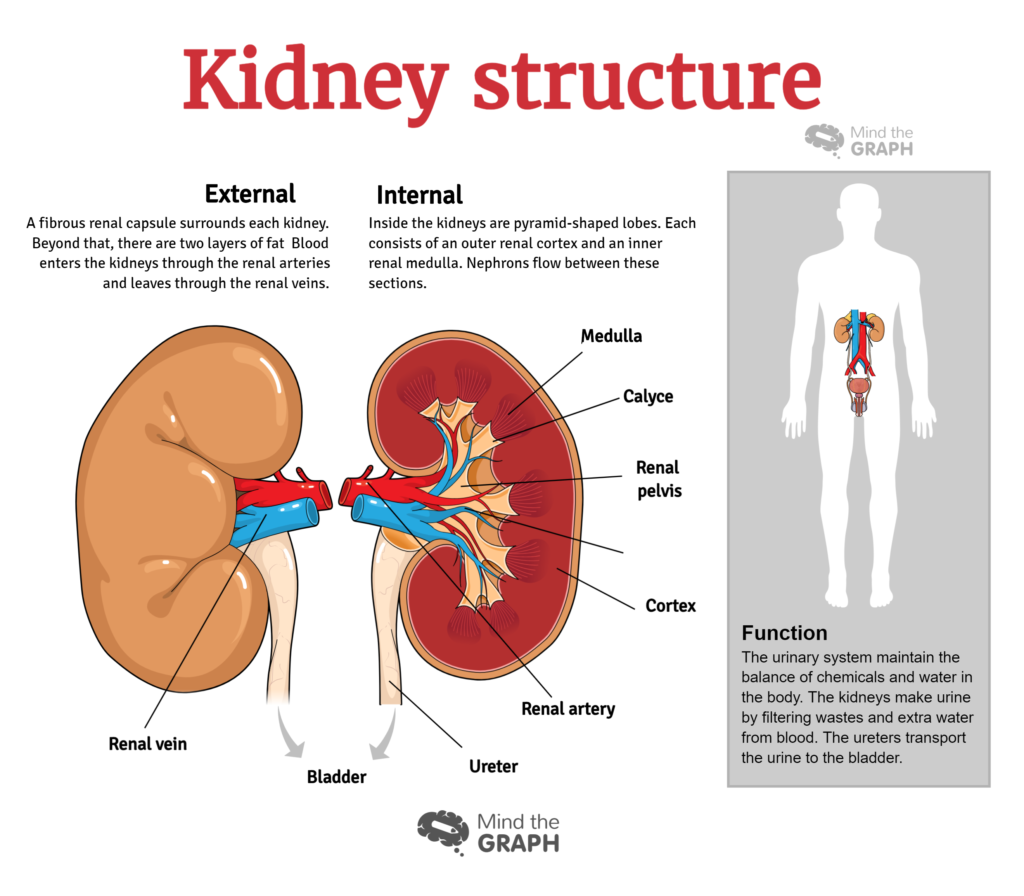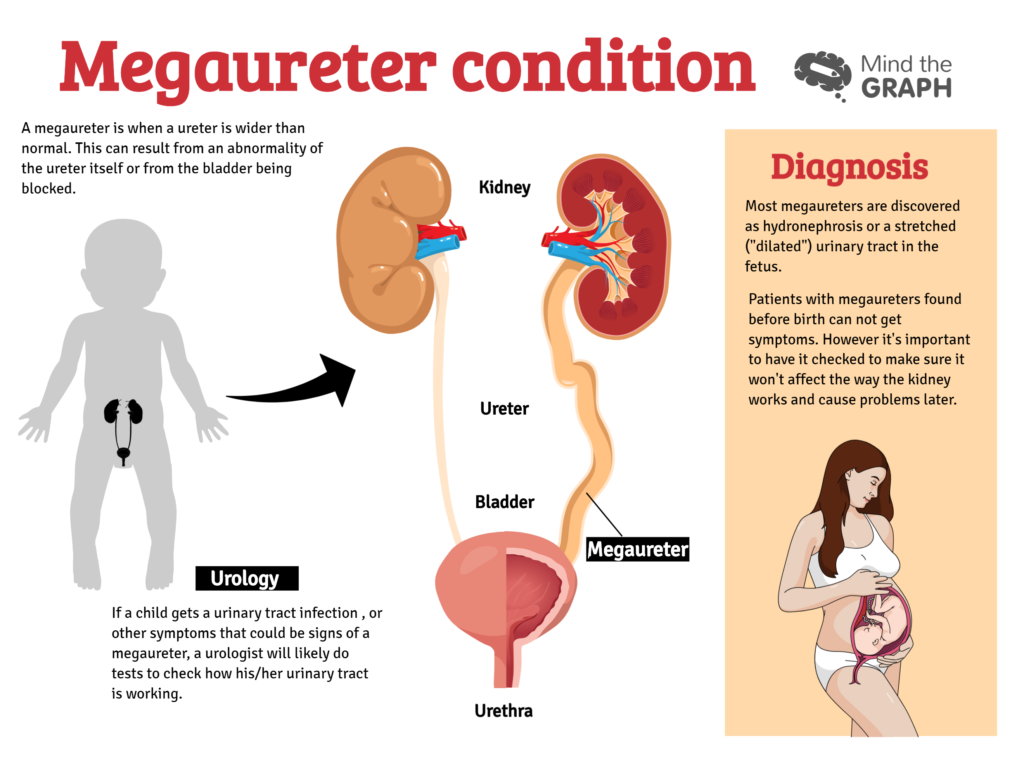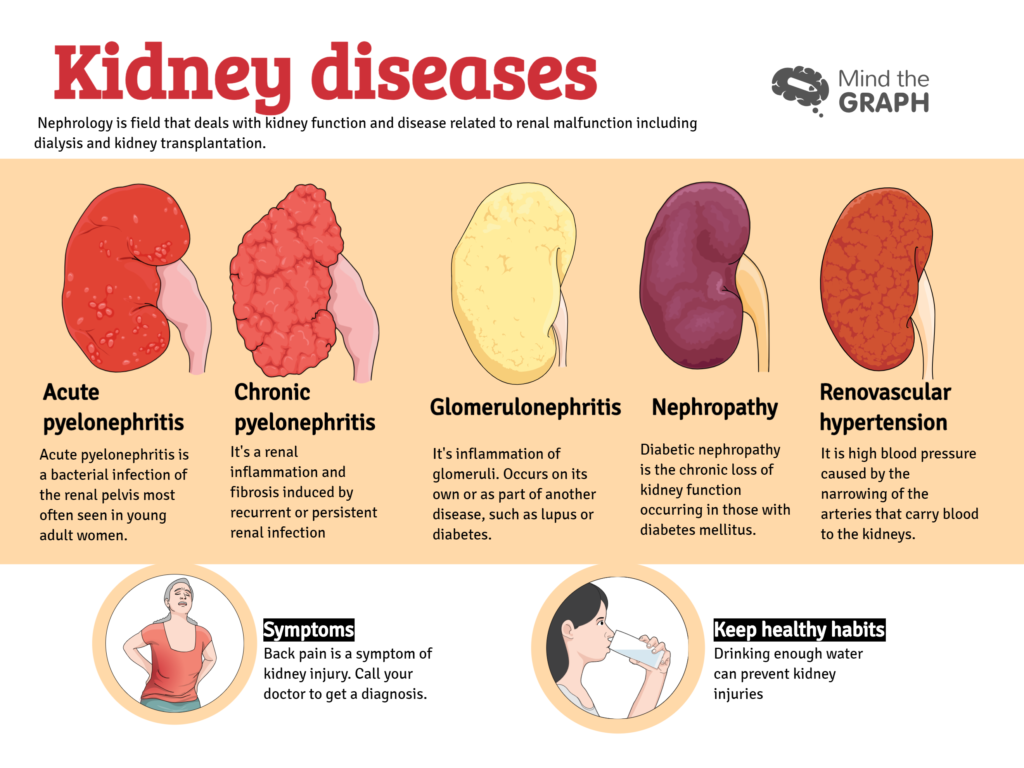The urinary system works with the lungs, skin and intestines to maintain the balance of chemicals and water in the body. Adults eliminate about 27 to 68 fluid ounces (800 to 2,000 milliliters) per day. This data is based on typical daily fluid intake of 68 ounces (2 liters), National Institutes of Health (NIH). Besides that, other factors in urinary system function include fluid lost through perspiring and breathing. In addition, certain types of medications, such as diuretics that are sometimes used to treat high blood pressure, can also affect the amount of urine a person produces and eliminates. Some beverages, such as coffee and alcohol, can also cause increased urination in some people. When an urinary organ presents malfunction, it can develops urinary system diseases.
The urinary system consists of all the organs involved in the formation and release of urine. These organs are kidneys, ureters, bladder and urethra. However, in this post I’ll focus on the kidneys, since they are responsible for urine production. Therefore, before talk about urinary disease, let’s take a look at the healthy kidney structure:
The kidneys are two bean-shaped organs found in vertebrates. The nephron is the structural and functional unit of the kidney. Each human adult kidney contains around 1 million nephrons. The kidney participates in the control of the volume of various body fluid compartments, fluid osmolality, acid-base balance, various electrolyte concentrations, and removal of toxins.
Urinary system diseases
Megaureters
A megaureter (“large ureter”) is when a ureter is wider than normal. This can result from an abnormality of the ureter itself (primary) or from the bladder being blocked (secondary). The different types of megaureters are described below.
Primary Obstructed Megaureter
This type is when the ureter is too thin where it enters the bladder. This block causes the ureter to get wider further up. The narrowing can damage the kidney over time. The problem can be fixed with surgery. It’s important to follow up with your health care provider even if the symptoms improve.
Secondary Megaureters
These are megaureters that show up as a result of other health problems. Some of these health problems that cause megaureters are:
- posterior urethral valves (a block in the male urethra)
- prune belly syndrome
- neurogenic bladder (spina bifida, spinal cord injury, etc.)
Renal diseases
In most cases, Other health problems can cause kidney failure, by doing permanent damage to kidneys little by little, over time. Therefore, when the kidneys are damaged, they may not work as well as they should. If the damage continues to get worse, the patient can develop chronic kidney disease. Chronic kidney disease damages the nephrons slowly over several years. Moreover, kidney failure is the last (most severe) stage of chronic kidney disease. This is why kidney failure is also called end-stage renal disease.
Most urinary system diseases attack the nephrons. This damage may leave kidneys unable to remove wastes. Causes can include genetic problems, injuries, or medicines. You have a higher risk of kidney disease if you have diabetes, high blood pressure, or a close family member with kidney disease.
How to show scientific data using beautiful graphical abstracts
I created all these figures using mind the graph. If you want to improve your communication in science, you can use mind the graph to create your graphical abstracts as well. Moreover, you can create presentations and scientific posters in Mind the graph.

Subscribe to our newsletter
Exclusive high quality content about effective visual
communication in science.











